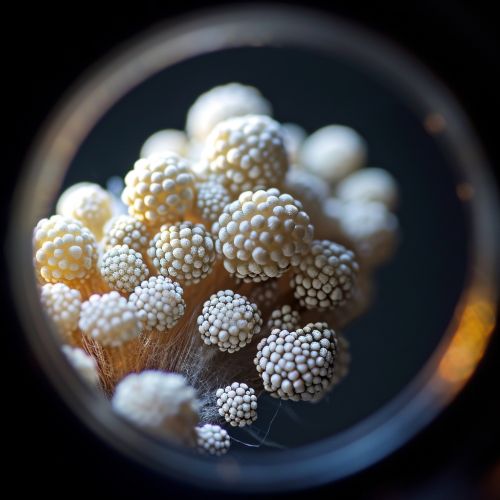Spore
Introduction
Spores are a form of reproductive unit in the life cycle of many plants, algae, fungi and some protozoans. A chief characteristic of spores is their ability to withstand harsh environmental conditions for extended periods of time. Unlike seeds, which contain an embryonic plant, spores are usually single-celled and have very little stored food.
Biology of Spores
Spores are produced by several different types of life forms ranging from bacteria to plants and fungi. They are typically produced in large numbers because the chances of survival to adulthood are usually slim. Spores can be classified into various types based on their origin and the way they spread.
Bacterial Spores
Bacterial spores, also known as endospores, are extremely durable and can survive in extreme conditions. They are formed within the bacterial cell and are resistant to ultraviolet radiation, desiccation, extreme temperature, and chemical disinfectants. Bacterial spores can remain dormant for many years and then germinate when conditions become favorable.
Fungal Spores
Fungal spores are produced in a variety of ways, depending on the species. Some fungi produce spores in specialized structures called sporangia, while others produce spores on the ends of hyphae, the filamentous structures of fungi. Fungal spores are often dispersed by wind or water.
Plant Spores
In plants, spores are produced by meiosis in the sporophyte generation. In ferns and mosses, the spores are released into the environment and develop into a new organism. In higher plants, the spores develop into the male and female gametophytes.
Spore Formation and Dispersal
Spore formation involves a series of steps that result in the creation of a single-celled reproductive unit. The process varies depending on the organism but generally involves the production of a cell that is resistant to environmental conditions and can remain dormant for an extended period of time.
Spore dispersal is a crucial step in the life cycle of a spore-forming organism. It ensures the spread of the species and colonization of new habitats. Dispersal mechanisms vary widely among different groups of organisms and can involve simple passive transport by wind or water, or more complex mechanisms involving animals.
Role in Disease
Spores play a significant role in disease, particularly in diseases caused by fungi and bacteria. Many plant diseases are caused by fungal spores, and some human diseases, such as anthrax and botulism, are caused by bacterial spores.
Spore Survival and Germination
Spores are known for their ability to survive in harsh conditions for long periods. They can withstand extreme temperatures, lack of water, and exposure to chemicals and radiation. This resilience is due to the presence of a tough outer coating, or spore wall, which protects the genetic material inside.
When conditions become favorable, spores can germinate and grow into a new organism. The process of germination involves the activation of metabolic processes and the initiation of cell division.
Spores in Biotechnology
Spores have numerous applications in biotechnology. They are used in the production of antibiotics, as probiotics, and in the fermentation of foods and beverages. In addition, spores are used in biological research as model organisms.
See Also


